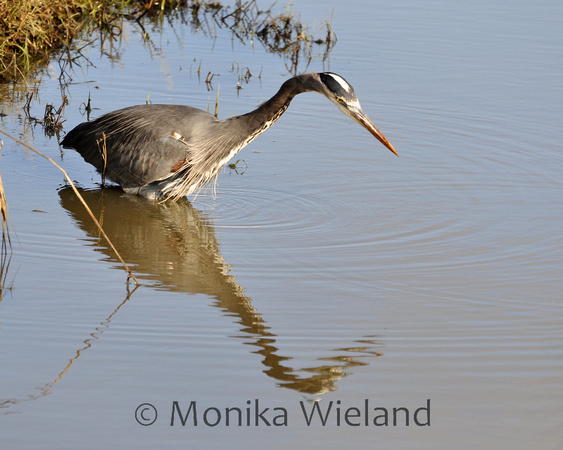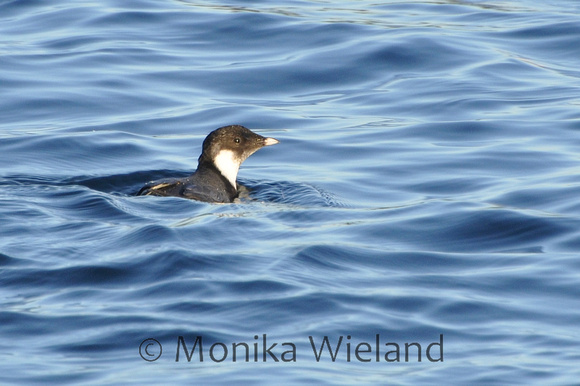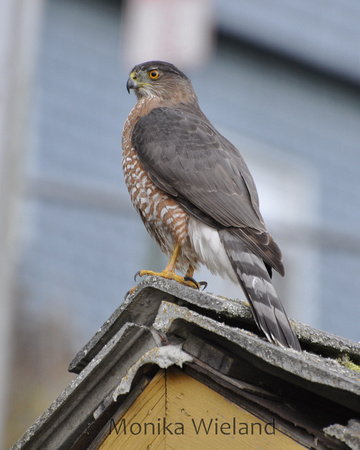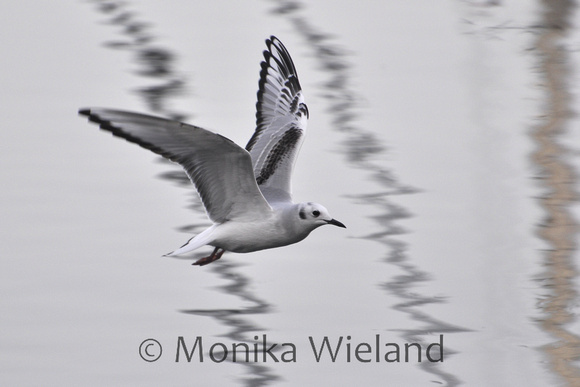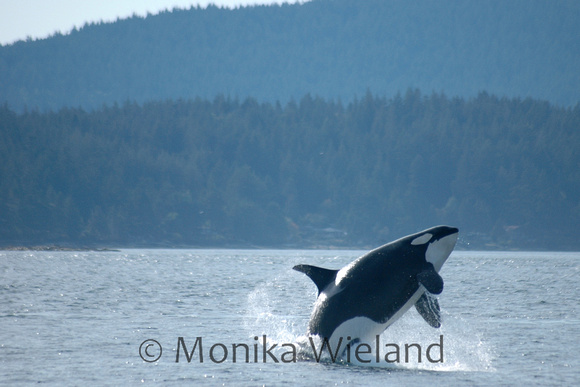With only a short time to go before leaving the island for the holidays (and thus the rest of the calendar year), I renewed my efforts to find a few target species I thought I could add to the county list in my quest to reach 157 species and best the existing record for species seen in a year. (I bet people have probably seen more species in a year, but 156 is the number on record with Washington Birder, so that's the number I'm trying to best.)
Thayer's gull is one species I knew I should be able to get. It's a hard one to find, not because it's not here, but because it looks so similar to several other gull species. It most often gets compared to the herring gull, but I think it looks almost exactly like our western x glaucous-winged gull hybrids that are fairly common regionally. I studied up all the details of identification and went out with the specific purpose of studying gulls.
I found this gull in Griffin Bay and have concluded its a Thayer's gull due to the three features indicated with the arrows. The blue arrow shows the dark (almost black) primaries - darker than those of a glaucous-winged or hybrid gull, but not jet black as in other gulls. The red arrow points to the shape of the forehead - on this gull it is more rounded, whereas in western and glaucous-winged gulls the forehead is flatter. Finally, the green arrow is pointing to the bill. On Thayer's gulls, the base of the bill is a pale yellow while the tip is bright yellow, as on this gull (it's more apparent on a zoomed in version of the photo). In glaucous-winged and western gulls, the bill is almost a school bus yellow throughout. So - Thayer's gull (153 for San Juan County, year bird 202)!

I got an e-mail from an ace birder, Ryan, inquiring about the details of the San Juan snowy owl sighting from a couple weekends ago. He came up to the San Juans last weekend, and in a couple of days turned up more than 100 species including 7 or 8 that would be county birds for me. (He also heard a long-eared owl, very rare for here, and a species that would be a life bird for me! More on that later.) In the process, he also pushed his own county list for the year to 161 - better than the existing record of 156! Uh oh! Realized 162 was probably out of reach for me, I decided to take advantage of some of the great sightings Ryan reported and still push towards my original goal of 157.....
One day after work, I headed out to look for the ruddy duck he saw on Sportsman Lake. Most of the ducks were on the far side of the lake, and as is often the case when I go out looking for a specific species, I didn't find it. I did, however, finally find my northern shoveler (154) - not just one, but a flock of 15 right up close! While continuing my circuit of the lakes and ponds in the center of the island, I also found a singled cackling goose (155) in with a flock of Canada geese.
Yesterday my birding pal Phil came over to San Juan and we had a couple of hours to tour around the island and see what we could turn up. Our first stop of the day was again at Sportsman Lake, and this time the ruddy duck (156) was close enough to be identified! Some other highlights from the rest of our afternoon included an American kestrel along Bailer Hill Road, a northern shrike at Cattle Point, and six ancient murrelets in Cattle Pass. By the end of the day, we totaled nearly 50 species in the 2.5 hours birding.
This morning I decided to try for the long-eared owl that Ryan heard at American Camp in the early hours of last Sunday. This is a rare species for the region, and as far as I know, there haven't been any prior confirmed reports of healthy birds on San Juan Island. I say healthy birds because twice, once in 1987 and once in 2010, long-eared owls were found on the island but were sick or injured and had to be taken to the local wildlife rehab center. It's not often I set my alarm earlier for a Saturday than I do for a work day, but this seemed like a worthy cause.
It was still completely dark when I arrived and it was a little bit eerie walking out through the forest towards the prairie. I spend about half an hour walking up and down between the two habitats, listening carefully. Not long after I got there an owl did give me a close fly-by, startling me enough that I jumped. I'm assuming it was probably the expected short-eared owl, but who knows for sure!
As soon as it started becoming light more and more birds began chirping, peeping, and calling. My first species of the day was actually a bald eagle!
Since I was up and out anyway, and this is a good time of day for birding, I decided to continue further to the south end of the island and see if I could find anything else interesting. As soon as I was pulling into the road to South Beach, however, my attention was diverted from birds to what turned into a pretty darn spectacular sunrise:
The sun itself came into view just as I crested the rise heading towards the Cattle Point Lighthouse:
While watching the sunrise, a flock of 15 ravens came by. Here are a few of them:
There were a pair of red-tailed hawks and a northern harrier patrolling the prairie near the lighthouse. The waters were rougher than I expected off of Cattle Pass, but I was still able to find the expected surf scoters and bufflehead as well as a Pacific loon, a red-necked grebe, several pigeon guillemots, and a half dozen red-breasted mergansers among the choppy surf.

After having been out birding for close to two hours, I decided to head home. I got in the car, started the engine, and did a U-turn to head back to town. I immediately stepped on the brakes. Kiting right above the middle of the road, about 50 feet in the air, was a rough-legged hawk (157) - an incarnation of the birding spirit and my quest for that one more species. I'm often pretty reserved, but I'll admit that I whooped in excitement at this white hawk in the sky. As I've written in previous posts, while I keep a lot of bird lists, I wouldn't saying listing is my main motivation for birding. I set goals and try to reach them, but I won't go the extremes some do to add that one more species. I would be fine if I stayed at 156 species for the county for the year, and not just because Ryan's already bested that mark all the way to 161. Still, there was something magical in just being ready to pack it in for the day, turning around, and having that one more species literally hovering right in front of me, lit up by the golden light of the sunrise. In one sense, it was just another hawk. In another, it's a bird I will never forget.


























